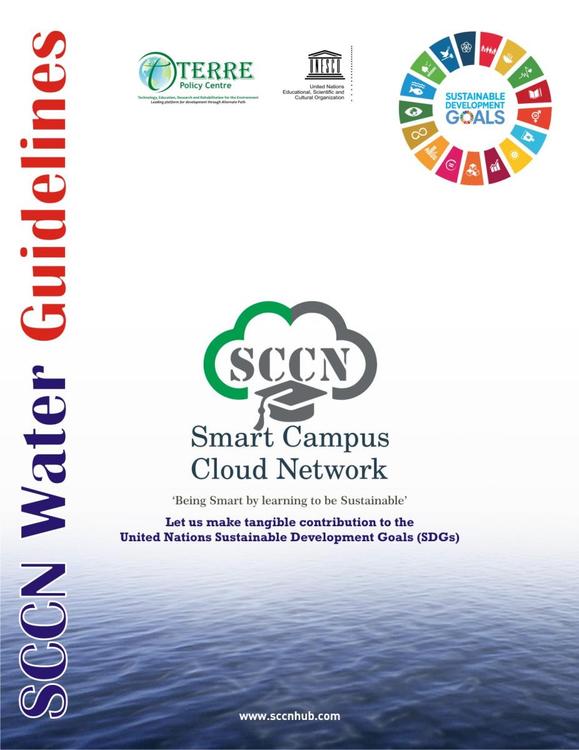
SCCN Water Guidelines
Water is a foundation and necessity for the life on Earth. The water crisis arises from the fact that water availability on the planet is finite. Life on Earth emerged from salt waters of the oceans, but to maintain that life, freshwater is essential.
Just about 3 percent of the total water on Earth is fresh-water, of which only 1.5% is accessible in the form of rivers, lakes and ground water.Rest of the fresh water is locked in the permafrost, polar region and glaciers. The recent World Economic Forum’s Global Risk Report ranks “water crises” near the top of the ten global risks that threaten economic growth. Continued ecological degradation add to that threat. The impact of climate change is only exacerbating the water crises.
Increasing population, enhanced lifestyle, enlarged need for the food, multiplying deforestation for agricultural purposes, swelling need for the habitation and ever rising industrialisation, among others, are all creating water-stress. In 1972, the world leaders started realising the stress on the ecosystem and the impact of environmental degradation on the human development. The global dialogue to address these challenges was initiated.
From 1992 onwards, Agenda 21 was agreed globally in which sustainable development was the anchor point. Using resources cautiously and cost effectively, so that we do not adversely affect their access and availability in future is really a principle of ‘long-term sustainability’ which has now been a priority on the international policy agenda. To institutionalise such policy agenda, the United Nations have set the Sustainability Development Goals (SDGs) whose implementation has started from 1 January 2016. SDGs consist of 17goals, 169 targets and 230 indicators.
Achieving the SDGs, as is evident from their interconnectivity and intense engagement needed from the stakeholders, is not only the responsibility of government but it requires productive partnership with private sectors, civil societies, communities and individuals. Infact the SDG #17, that seeks to develop the global partnerships, is an integrated goal to achieve all the remaining goals. Smart Campus Cloud Network (SCCN) is in a way, partnership of universities where the future leaders and managers are skilled. I am pleased to provide this guideline for the unique partnership of universities. The very attainment of all 17 SDGs of the United Nations by 2030 i.e.poverty and hunger eradication, human health, well-being of the planet and others is dependent on how the water resources are managed effectively and water-security is ensured efficiently. Hardly there is any country where water is not considered as scarce, stressed and unsecured resource. For example, India is facing its ‘worst’ water crisis in history and that demand for ppuses.Whatcouldbethebetterwaythan coming out of the class-rooms to campus-spaces?
For complete 'SCCN Water Guidelines' of MITWPU,
please write to Dinah Gengmei on



